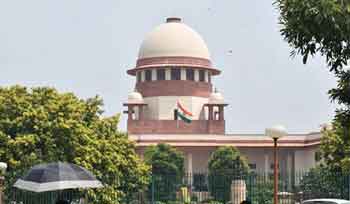AVM (Dr.) Ajit Tyagi **
The World Meteorological Organization (WMO) is a specialized agency of the United Nations on the state and behaviour of the Earth’s atmosphere, its interaction with the oceans, the climate it produces and the resulting distribution of water resources. It came into existence on 23rd March 1950 and at present has a membership of 189 Member States and Territories. Under WMO leadership and within the framework of WMO programmes, National Meteorological and Hydrological Services contribute substantially to the protection of life and property against natural disasters, to safeguard the environment and to enhance the economic and social well-being of all sectors of society in areas such as food security, water resources and transport.
Over the years WMO has contributed a lot towards human security and well-being. The period of sixty years can be divided on the basis of its achievements-
Formative Years (1950-63)
In these years detailed specifications for national and regional climate atlases were drawn up along with the publication of technical regulations and the development of guides to achieve uniformity of meteorological practices. The International Geophysical Year (1957–1958) was a major landmark for international research collaboration on 11 disciplines in the earth sciences. WMO supported the National Meteorological and Hydrological Services of growing number of new Members through an active technical assistance programme. Expansion of weather-sensitive activities and the continuous need for improved accuracy of forecasts had prompted an increase in observations at surface and upper levels of the atmosphere during this period. The advent of radio-teletypewriter, facsimile and other radio transmission stations facilitated the availability of real-time data and the preparation and dissemination of weather maps.
Technological Development(1964-70)
The World Weather Watch Programme was established with the components of Global Observing System (GOS), Global Data-processing and Forecasting System and Global Telecommunication System, due to the advances in remote-sensing, satellites, communications and computers.
By the end of 1972, there were about 8500 surface stations, 5500 merchant and ocean weather ships, and commercial aircraft and meteorological satellites all working together within the framework of the WMO system. The initiation of a global weather experiment known as the Global Atmospheric Research Programme (GARP) was a significant development. This programme implemented over the next decade led to considerable advances in weather forecasting and climate prediction. During this period, a number of newly independent States joined WMO. WMO established its own Voluntary Assistance Programme, in order to complement resources from the United Nations Development Programme (UNDP) and provide effective and timely support.
Decade of Initiatives(1971-80)
· The catastrophic Sahelian drought of the late 1960s and early 1970s led WMO to establishment of AGRHYMET Centre in Niamey, Niger, for capacity-building and applying agro meteorology and hydrology to the mitigation of drought and desertification, with a view to promoting food security.
· The loss of more than 400, 000 lives in Bangladesh in 1970 led WMO to reinforce its Typhoon Committee, which was formed in 1968.
· In 1971, WMO established the Tropical Cyclone Project, which was later upgraded to the level of a programme.
· WMO contributed extensively to United Nations Conference on the Human Environment in 1972 which resulted in the creation of the United Nations Environment Programme (UNEP).
· In 1977, WMO participated actively in the United Nations Conference on Desertification and developed an Action Plan on drought and desertification, which provided valuable guidance to other countries.
· The adoption of convention and protocols on the protection of the ozone layer took place in 1985 and1987 respectively.
· The First GARP Global Experiment, or FGGE, was carried out from 1978 to 1979 which contributed to defining the global atmospheric circulation and to developing more realistic mathematical models for medium and extended-range weather forecasts and for climate projections.
· Other regional experiments MONEX for the Asian monsoon and ALPEX for the Alpine region were carried out.
· Weather modification experiment was carried out in Spain which gave rise to improved understanding of processes involved.
Climate and ozone (1981–1990)
Several of the initiatives of the previous year’s came to fruition in this decade, with numerous actions on the climate and ozone fronts, impacts and applications. The 1985 Villach Conference assessment of the role of carbon dioxide and other greenhouse gases in climate variations provided the first universally accepted statement on the most likely magnitude of global warming and its consequences.
WMO action led to the establishment of the 1985 Vienna Convention on the Protection of the Ozone Layer and the 1987 Montreal Protocol on substances that deplete the ozone layer. As a result, science-based policy was formed for phasing out of ozone-depleting substances, with a return to normality projected over the coming 50-year period.
Natural Disasters And Sustainable Development (1991–2000)
The recurrence of extreme weather events, such as the 1982–1983 El Niño-related disasters, and concern about the continued degradation of the environment gave rise to three major developments during the decade:
· International Conference on Water and Environment, 1992
· United Nations Conference on Environment and Development ,1992 and
· United Nations International Decade for Natural Disaster Reduction 1990–1999.
This period also saw the entry into force of the United Nations Framework Convention on Climate Change (UNFCCC) and its 1997 Kyoto Protocol, as well as the United Nations Convention to Combat Desertification in 1994 and the Convention on Biological Diversity in 1993.
Climate change (2001–2010)
It was the steady perseverance of climate scientists, supported by the activities of WMO and other partners that ultimately brought climate change to the forefront of the global agenda. The 2001 IPCC Third Assessment Report concluded: “there is now stronger evidence for a human influence on the global climate”. The 2007 Fourth Assessment Report stated that “warming of the climate system is unequivocal” and that “most of the observed increase in global average temperatures since the mid-20th century is very likely due to the observed increase in anthropogenic greenhouse gas concentrations.” Three climate conferences have taken place till now in 1979, 1990 and 2009.
Role of IMD in WMO
IMD has been the founder member of WMO. It plays an important role as a member of Regional Association-II (Asia) under WMO. The participation of IMD in various activities of WMO is:
· Regional Telecommunication Hub (RTH), New Delhi for exchange of meteorological data and information among international community.
· Regional Specialized Meteorological Centre (RSMC) for providing Tropical Cyclone Advisory to countries of Indian Ocean
· Regional Training Institute at Pune for providing Meteorological Training to officials from South East Asia, Middle East countries and Africa.
· IMD has extended International Co operation in Meteorology with various countries e.g. Maldives, Nepal, Srilanka, USA, Russia, China and France.
Presently India Meteorological Department has taken up an extensive modernization programme with the following objectives and expected outcomes to enhance weather services in the country which will lead to more IMD prominence in WMO.
Objectives
· Induction of advanced technology for observational systems e.g. Automatic Weather Stations (AWS), Doppler Weather Radars (DWR), advanced satellites and upper air observations network.
· Installation of a centralized information processing system and its link with the national meteorological centers.
· Assimilation of satellite data and products into NWP models.
· Improved data dissemination and better public access.
· Induction of more objective forecasting system.
· Improvement in public weather services (PWS) and early warning system.
As an outcome of the Modernization programme there are District level forecast services, now forecasting severe weather events, Extended range (10-20 days or a month) Forecast; Increased accuracy of short, medium and long range forecasts; Multi hazard early warning; Real Time Data Availability; Quicker response time for management and Improved Spatial and Temporal Coverage.
AVM (Dr.) Ajit Tyagi **
**Director General of Meteorology, India Meteorological Department, Lodi Road, New Delhi.















Thank you for submitting this cool story
Took me time to read all the comments, but I really enjoyed the article. It proved to be Very helpful to me and I am sure to all the commenters here It’s always nice when you can not only be informed, but also entertained I’m sure you had fun writing this article.
Only select the greatest Fat Burner!!!
This is one technology that I would love to be able to use for myself. It’s definitely a cut above the rest and I can’t wait until my provider has it. Your insight was what I needed. Thanks
Great posting